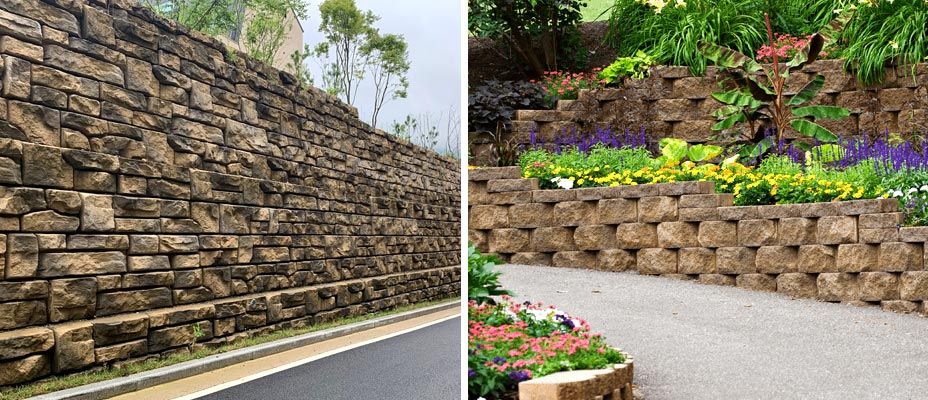Wet Cast Vs. Dry Cast Comparison

Avg. Read Time: ±5 min
It’s a debate as old as the glaciers. The dinosaurs argued about it at their watering holes. Differing opinions on the subject sparked more than one open conflict. Do you actually believe the Anglo-Zanzibar War of 1896 was sparked by an exchange of power following the untimely death of a young sultan? Nope. Friendships have been severed. Families have splintered. Yet the debate rages on with no end in sight…
Dry cast concrete or wet cast concrete? Which precast concrete solution is better for your project?
Full disclosure: Redi-Rock blocks are proudly produced by our more than 150 global manufacturers using wet cast concrete. But we’re fair folks and this question deserves answers you can trust so we’ll explore the pros and cons of both dry cast and wet cast precast concrete to supply an objective and helpful comparison.
The Base Course
Short on time? Here are this article’s key takeaways…
Dry cast concrete mix is stiffer and more difficult to mold. Wet cast mix is more fluid and its higher water content makes it easier to form.
The industrial compression used to press dry cast mix into blocks and the resulting shorter curing time is a quicker process than the natural concrete curing period required of wet cast blocks.
Both dry cast and wet cast blocks can be used in a variety of applications, though wet cast is a better choice for water projects and sites exposed to freeze-thaw cycles.
Wet cast’s more fluid mix allows for more detail to be transferred to the blocks during production.
The Bottom Line
When choosing the materials for your retaining wall, it’s easy to feel overwhelmed by the numerous considerations you’ll be confronted with. Avoid the temptation to home in on a single quality of dry cast or wet cast, instead evaluate them holistically against your project’s needs. For example, consider the lifetime value of your proposed wall. By “lifetime value” we mean the total you’ll spend on the wall’s design, purchase, installation, maintenance, and possibly, replacement should it reach the end of its design lifespan. Like many things in this world, we get what we pay for. Sometimes spending less for something that we don’t need to last is the wisest choice. We don’t spend a lot on work shirts, because if it rips or gets stained, we simply purchase another and don’t give it a second thought. But this spending philosophy shouldn’t apply to retaining walls. You’ll want to keep in mind that, should your wall require significant repair or even replacement, you’re not just buying the blocks. You’re paying again for design, engineering, and installation, on top of the blocks themselves. Overlooking the lifetime value of a retaining wall has led plenty of project owners to regret their decision to choose the cheaper option. For more information on lifetime value, visit the Redi-Rock pricing page.
So if you’re looking for a slam dunk recommendation here, you won’t get it. Both dry cast and wet cast have pros and cons and claim their space in the construction industry. Your choice should be predicated on what’s important to you.
Need a less expensive, small block retaining wall in a moderate climate that doesn’t need to impress with its appearance or last forever? Dry cast is your best bet. Looking for a large block retaining wall that needs to look great, handle water, stand up to the change of seasons, and probably outlive you? Wet cast is your best value.
Make the choice that works for your project, your site, your budget, and your style.
But in case you were wondering, T-Rex was a wet cast guy. 🦖